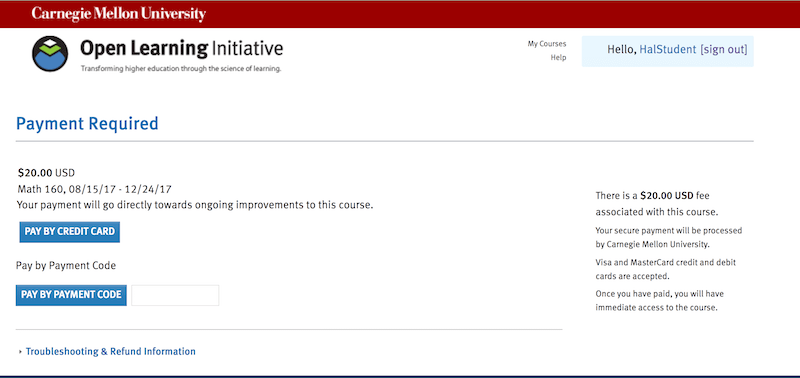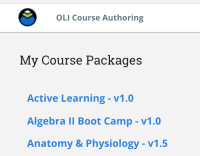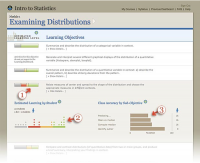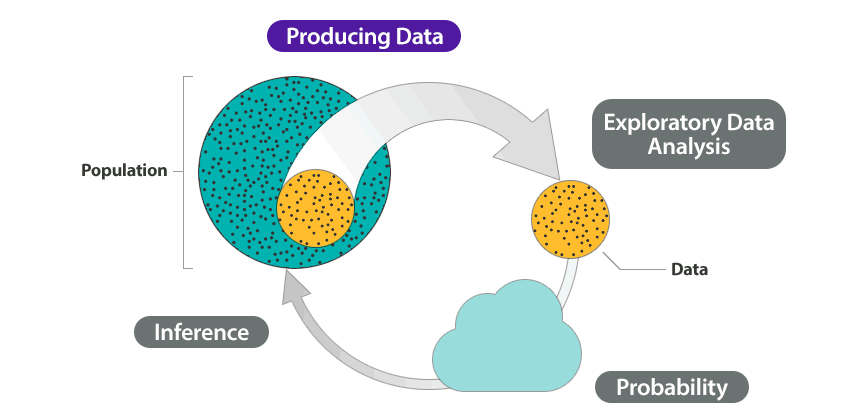Learn about PC hardware, software, and networking, as well as core skills for computing professionals. Cyber students are prepared for entry-level positions across the computing industry and in government, and have an opportunity to sit for nationally recognized certifications from Cisco and CompTIA.
Cyber Technology — NSC STEM Pathways
$25
- Description
- What students will learn
- Learning objectives by module
- Course assessments, activities, and outline
- Other course details
- System requirements
- Included instructor tools
Description
The National STEM Consortium’s (NSC) Cyber Technology Pathway is a one-year, 30-credit hybrid course (mixture of online and face-to-face) consisting of 12 mini-courses. The entire Pathway consists of a set of materials a school or institution can customize for their program’s or students’ needs. Each mini-course includes:
- A downloadable Teaching Toolkit with the following documents:
- A course introduction (READ ME) that explains the course, including course structure, learning outcomes, prerequisites, and suggested texts.
- A suggested syllabus that you can customize to your college, department, course, and individual preferences.
- Suggested lesson plans with learning outcomes and assessments, lesson outline, teaching tips, and instructional resources.
- Supplemental materials as labeled.
- OLI online modules to help prepare students for face-to-face instruction, by providing mini-lessons and interactive drills that address common sticking points
NOT INCLUDED are the recommended textbooks. See the README First document in the Teaching Toolkit for each mini-course for a list of recommended texts.
Created through a collaboration with the OPEN Platform+ program, The National STEM Consortium academic certificate in Cyber Technology is built on a 30-semester-credit model with learning outcomes mapped to the National Cybersecurity Workforce Framework. Graduates are prepared for entry-level Cyber positions in across industry and in government, and have an opportunity to sit for nationally recognized certifications from Cisco and CompTIA.
The National STEM Consortium (NSC) is a collaborative of ten colleges in nine states, funded by a U.S. Department of Labor grant to develop one-year, 30-credit certificate programs in five Science, Technology, Engineering, and Mathematics (STEM) fields: Composites Technology, Cyber Technology, Electric Vehicle Technology, Environmental Technology, and Mechatronics Technology.
Certificate Mini-Courses
PC Hardware is a study of the basic assembly, maintenance, and repair of microcomputer systems. Hardware-oriented topics covered include subcomponents, such as system board, video, memory, storage, multimedia, networking, and printers.
PC Software is a study of Windows operating systems, security and mobile devices, and troubleshooting theory and application. Topics include installation and maintenance of Windows operating systems; implementation of security features on microcomputer systems and mobile devices; installation and configuration of PC operating systems; and configuration and troubleshooting techniques for mobile operating systems Android and Apple iOS.
Network Essentials is a study of the fundamental topics and concepts of networks and network technologies. Topics covered include introductory content on networking standards, models and protocols, networking hardware, transmission methods and media, Local-Area Networks (LAN), Wide-Area Networks (WAN), Wireless, Voice over Internet Protocol (VOIP), security, and network management issues.
Security Fundamentals is a study of the information security field. Topics covered include threats and attacks, network security, wireless network security, basic and advanced cryptography, business continuity, and risk management.
Cisco 1: Introduction to Networks is a study of the fundamentals of networking and information systems. Students will learn both the practical and conceptual skills that build the foundation for understanding basic networking and the parallels between human and network communication.
Cisco 2: Routing and Switching Essentials is a study of the architecture, components, and operations of routers and switches in a small network. Students will learn how to configure a router and a switch for basic functionality.
Cisco 3: Scaling Networks describes the architecture, components, and operations of routers and switches in larger and more complex networks. Students learn how to configure routers and switches for advanced functionality.
Cisco 4: Connecting Networks focuses on accessing wide area networks (WAN). The goal is to develop an understanding of various WAN technologies to connect small- to medium-sized business networks.
Core Skills for Computing Professionals 1 is a study of skills and knowledge required for technical positions within the computing industry. This course consists of 11 lessons. Topics covered include mathematics, communication, and critical thinking skills essential to academic and workplace success.
Core Skills for Computing Professionals 2 is a study of skills and knowledge required for technical positions within the computing industry. This course consists of 7 lessons. Topics covered include communication and critical thinking skills essential to academic and workplace success.
Core Skills for Computing Professionals 3 is a study of skills and knowledge required for technical positions within the computing industry. This course consists of 11 lessons. Topics covered include mathematics, communication, and critical thinking skills essential to academic and workplace success.
Cyber Capstone consists of five lessons along with corresponding labs and class activities. Upon successful completion of this course, students will have demonstrated that they can identify the hardware and software required to build a personal computer and then build that computer.
Careers in Cyber Technology
The certificate aligns to the Customer Service and Technical Support category of the National Cybersecurity Workforce Framework and prepares graduates for positions such as Computer User Support Specialist, Computer Network Support Specialist, Network and Computer Systems Administrator, or Customer Service Representative. Other job titles may be Computer Technician, Network Technician, Information Technology Specialist, Technical Support Specialist, Customer Technical Support, Help Desk Analyst, Help Desk Representative, or Service Desk Operator.
For more information, visit the Occupational Information Network(O*NET), the nation’s primary source of occupational information.
NSC STEM Pathways
STEM Pathways are five certificate programs developed by the National STEM Consortium (NSC). NSC is a collaborative of ten colleges in nine states, funded by a U.S. Department of Labor grant to develop one-year, 30-credit certificate programs in five Science, Technology, Engineering, and Mathematics (STEM) fields: Composites Technology, Cyber Technology, Electric Vehicle Technology, Environmental Technology, and Mechatronics Technology. In collaboration with the OPENPlatform+ program, these have been implemented and made available on the OLI platform, with learning activities targeting specific areas of challenge, resources to support instructors and implementation guides for administrators.
The STEM Pathways use an innovative two-part STEM Bridge program to improve completion and success rates of students. This program embeds contextualized refresher instruction in mathematics, communication, and professionalism to eliminate traditional remedial courses and prepare students for success in demanding technical courses. The NSC STEM Readiness course enables students who are not fully college-ready in math to enroll and succeed in the technical curriculum, thus broadening the pool of potential students and opening STEM careers to a greater number of workers. The second element of the STEM Bridge is designed as a FAST TRACK program to support learners who require more intensive, up-front development of the basic skills required for access to the technically demanding educational pathways into STEM occupation. The STEM Foundations course provides elements of this FAST TRACK approach.
The NSC academic model is built on four research-based strategies that, when combined, yielded an average 69% on-time completion rate across its students nationwide.
First, NSC instruction is outcomes-driven, delivering learning outcomes mapped to industry standards. NSC member colleges formed regional advisory boards to respond to industry needs and employer requests. These materials include implementation guides with examples and recommendations from colleges whose regional economies support a diversity of industries, such as healthcare, construction, and the military.
Second, NSC programs are one-year, 30-semester-credit academic certificates. Certificates are a highly effective tool for workforce development, and are most effective when they are long enough to be rigorous yet short enough to be achievable. The certificate-level credential is a missing, but critical, on-ramp to career pathways for adult learners who often lack access to and awareness of high-demand careers in STEM fields. Graduates receive the greatest return on investment from certificates of one year or longer with a load of thirty-six semester credits or fewer.
Third, NSC programs use a built-for-completion structure including a program navigator, cohort structure, block scheduling, compressed timeline, enhanced student support services, and employer partnerships. Research has shown that it is the combination of strategies, rather than any single strategy, that boosts student success. Specifically, a growing body of evidence argues for “strategy intervention at a more comprehensive and integrated level that aims at simultaneous change focusing around whole program design and delivery – improving the coherency of instruction and educationally relevant services that students need as they move through their program of study.”
Last, NSC programs embed contextualized refresher instruction in mathematics, communication, and professionalism to eliminate traditional remedial courses and prepare students for success in demanding technical courses. The NSC STEM Readiness course enables students who are not fully college-ready in math to enroll and succeed in the technical curriculum, thus broadening the pool of potential students and opening STEM careers to a greater number of workers.
Colleges aiming for systemic change in their student completion and achievement levels are strongly advised to adopt the entire NSC academic model. However, NSC programs are flexible by design, allowing institutions to customize implementation to their regional economy and local conditions. For example, a college might choose to pursue implementation in stages.
STEM Pathway Programs
- Composites Technology
- Cyber Technology
- Electric Vehicle Technology
- Environmental Technology
- Mechatronics Technology
STEM Bridge Courses
What students will learn
The NSC Cyber Technology certificate program has learning outcomes in the categories of Computers and Electronics, Hardware, Operating Systems, Systems Life Cycle, Network Management, Knowledge Management, Incident Management, Information Technology Performance Assessment, Information Systems and Network Security, Critical Thinking and Troubleshooting, and Communication. These outcomes are broad themes of the program, achieved in one or more of its courses:
- Skill in a systems approach to critical thinking.
- Skill in effective professional communication.
- Skill in the basic operation of computers.
- Knowledge of basic physical computer components and architectures, including the functions of various components and peripherals such as central processing units (CPUs), network interface cards (NICs), and data storage.
- Knowledge of electronic devices such as computer systems/components, access control devices, digital cameras, electronic organizers, hard drives, memory cards, modems, network components, printers, removable storage devices, scanners, telephones, copiers, credit card skimmers, facsimile machines, and global positioning systems.
- Skill in testing and configuring network workstations and peripherals.
- Skill in using the appropriate tools for repairing software, hardware, and peripheral equipment of a system.
- Knowledge of the type and frequency of routine maintenance needed to keep equipment functioning properly.
- Knowledge of network security architecture concepts, including topology, protocols, components, and principles.
- Skill in identifying the risks and threats to an organization’s data and providing a structured way of addressing how to safeguard these critical electronic assets.
- Knowledge of disaster recovery and continuity of operations plans.
- Knowledge of systems administration concepts.
- Knowledge of measures or indicators of system performance and availability.
- Skill in identifying possible causes of degradation of system performance or availability and initiating actions needed to mitigate this degradation.
- Knowledge of the operations and processes for diagnosing common or recurring system problems.
- Knowledge of “knowledge base” capabilities in identifying the solutions to less common and more complex system problems.
- Skill in conducting open-source research for troubleshooting novel client-level problems.
Learning objectives by module
Pathway 1: Cyber Technology
- PC Hardware
- Demonstrate understanding of PATA device configuration.
- Identify common PC ports.
- PC Software
- Identify the correct Windows tool for a given scenario.
- Network Essentials
- Configure dynamic Network Address Translation (NAT) correctly on a router.
- Demonstrate counting in decimal and binary numbering systems.
- Perform addition using binary numbers.
- Security Fundamentals
- Apply classful IPv4 subnet masks.
- Describe the use of digital certificates.
- Cisco 1: Introduction to Networks
- Compare and contrast and default routes.
- Compare and contrast static and dynamic routes.
- Correctly use tracert commands and analyze the results.
- Define the networking term “route.”
- Recognize the purpose of the default gateway.
- Cisco 2: Routing and Switching Essentials
- Demonstrate subnetting of an IPv4 network.
- Employ proper configuration techniques for static routes.
- Cisco 3: Scaling Networks
- Convert between decimal and binary values.
- Correctly interpret a routing table.
- Utilize a tool to convert decimal and hexadecimal values.
- Cisco 4: Connecting Networks
- Apply IPv6 route summarization.
- Apply manual route summarization in IPv4.
- Core Skills for Computing Professionals 1
- Convert binary and decimal values by hand.
- Describe how decimal, binary, and hexadecimal numbering systems are used in computer technology.
- Represent characters correctly using decimal, binary and hexadecimal numbering systems.
- Use a tool to convert decimal and hexadecimal values.
- Capstone
- Identify correct connection cable to use amongst devices.
- Identify proper use of Ethernet and console cables.
Course assessments, activities, and outline
PATHWAY 1: Cyber Technology
Course 1: PC Hardware
Course 2: PC Software
Course 3: Network Essentials
Course 4: Security Fundamentals
Course 5: Cisco 1: Introduction to Networks
Course 6: Cisco 2: Routing and Switching Essentials
Course 7: Cisco 3: Scaling Networks
Course 8: Cisco 4: Connecting Networks
Course 9: Core Skills for Computing Professionals 1
Course 10: Core Skills for Computing Professionals 2
Course 11: Core Skills for Computing Professionals 3
Course 12: Capstone
Other course details
System requirements
OLI system requirements, regardless of course:
- internet access
- an operating system that supports the latest browser update
- the latest browser update (Chrome recommended; Firefox, Safari supported; Edge and Internet Explorer are supported but not recommended)
- pop-ups enabled
- cookies enabled
Some courses include exercises with exceptions to these requirements, such as technology that cannot be used on mobile devices.
This course’s system requirements:
- none listed (subject to change)
Included instructor tools
Instructors who teach with OLI courses benefit from a suite of free tools, technologies, and pedagogical approaches. Together they equip teachers with insights into real-time student learning states; they provide more effective instruction in less time; and they’ve been proven to boost student success.










